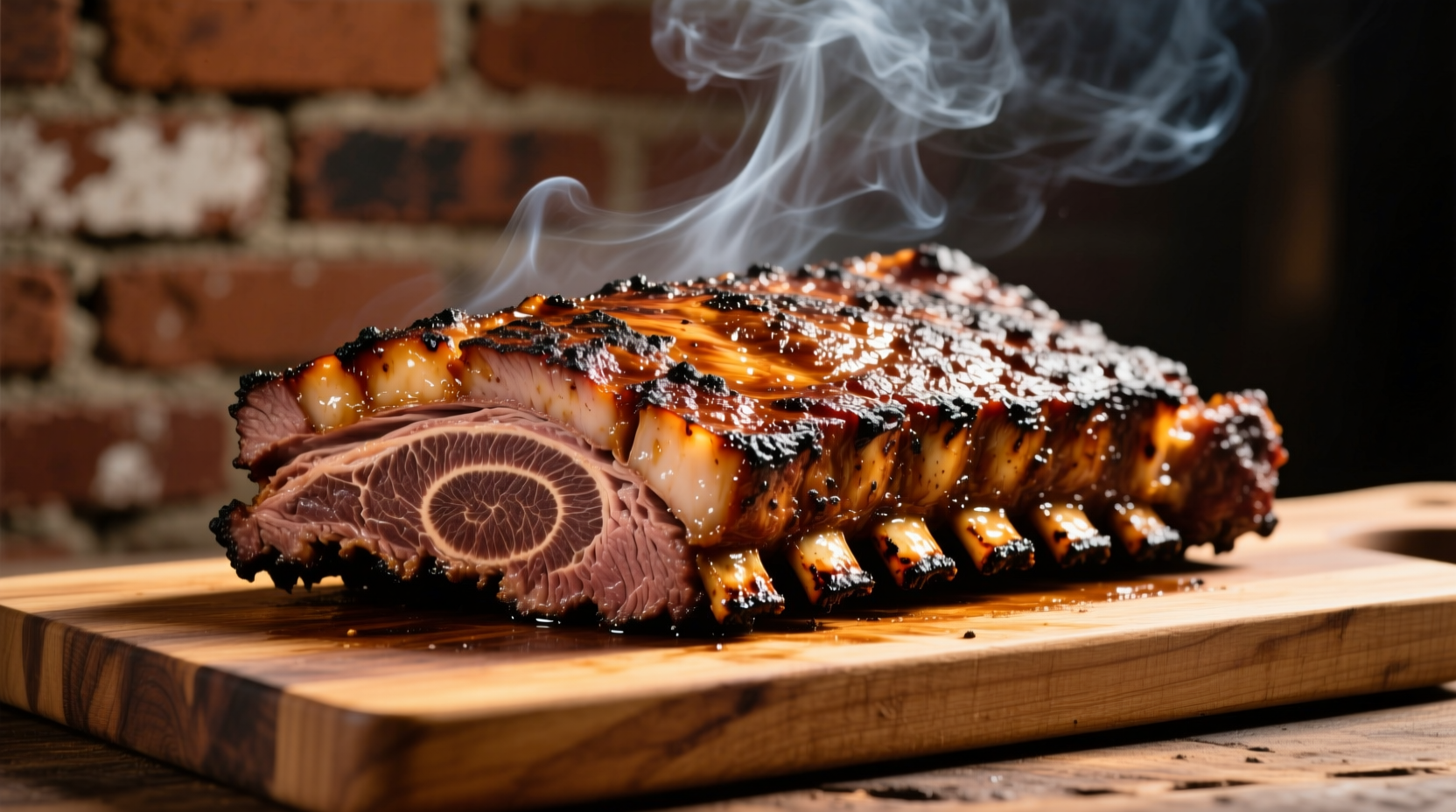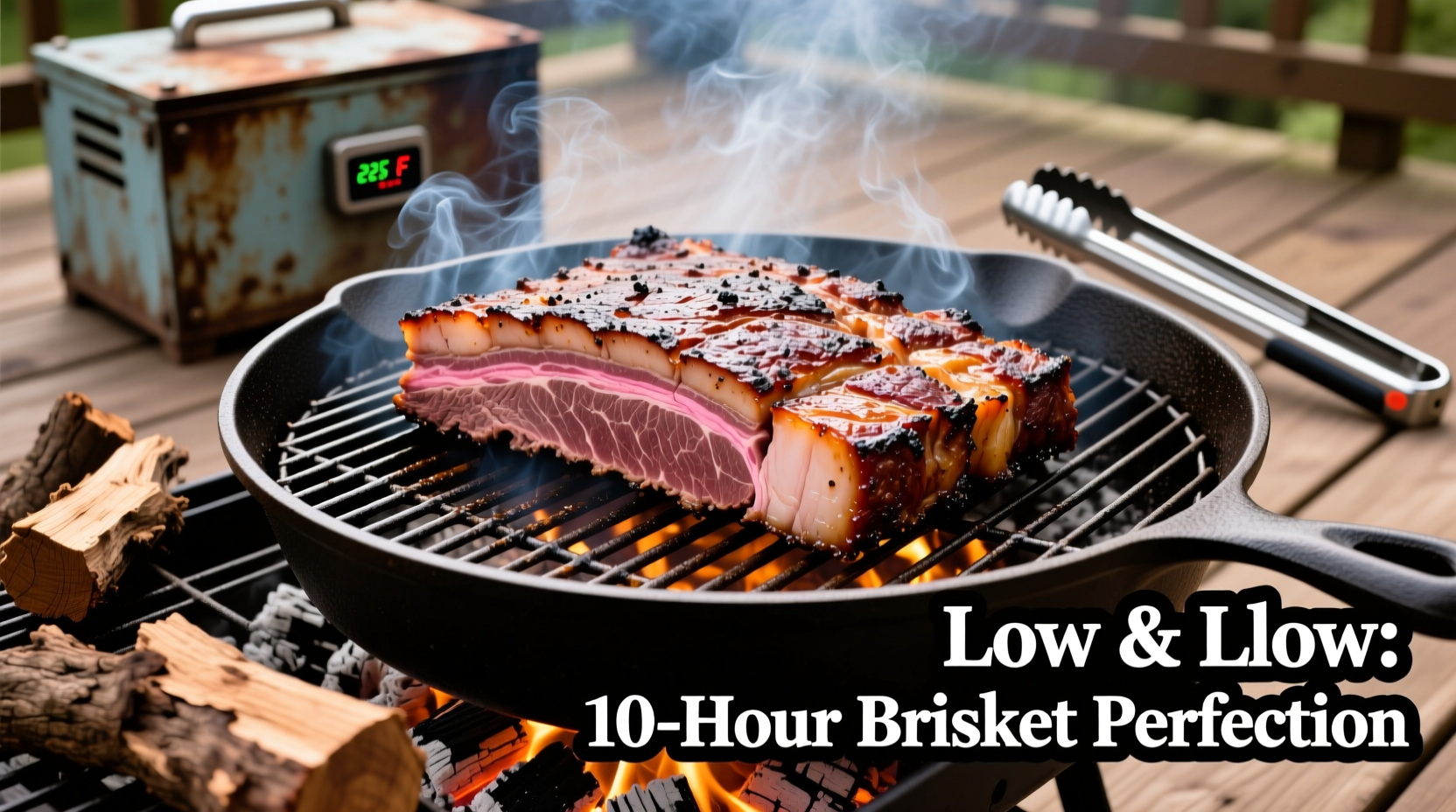Grilling brisket perfectly combines art and science. As a professional chef who's cooked thousands of briskets across Michelin-starred kitchens and backyard setups, I've refined this method to deliver consistent results regardless of your grill type. Forget confusing online advice - this guide cuts through the noise with actionable steps based on meat chemistry and decades of barbecue tradition.
Why This Brisket Method Works
Brisket's tough connective tissue requires precise temperature management. The "stall" phase around 150-170°F occurs when evaporative cooling slows cooking - a natural process many beginners mistake for a problem. Our two-stage cooking process (unwrapped then wrapped) leverages this stall to develop flavor while preventing dryness.
| Brisket Component | Function | Cooking Impact |
|---|---|---|
| Collagen | Connective tissue | Converts to gelatin at 160°F+ |
| Intramuscular Fat | Marbling | Melts at 130-140°F, moistens meat |
| Myoglobin | Protein pigment | Creates smoke ring below 140°F |
Essential Preparation Steps
Start with a USDA Choice or Prime "packer cut" brisket (12-14 lbs). This full cut includes both the flat and point sections, crucial for balanced cooking. Trim carefully:
- Remove hard fat deposits but maintain 1/4 inch fat cap
- Square the edges to promote even cooking
- Round the "nose" (thinner end) to prevent overcooking
The rub chemistry matters more than you think. Coarse black pepper (not pre-ground) contains piperine that enhances smoke absorption, while kosher salt's pyramid shape helps it adhere better than table salt. Mix 1:1 ratio of coarse salt and pepper - no sugar needed as it burns at grill temperatures.
Grill Setup for Perfect Results
Configure your grill for indirect cooking:
- For charcoal: Arrange coals on one side, place brisket on opposite side
- For gas: Light only half the burners, position brisket over unlit side
- Maintain steady 225°F using a dual-probe thermometer
- Add oak or hickory chunks (never chips) for authentic smoke flavor
Temperature stability is non-negotiable. According to the USDA Food Safety and Inspection Service, maintaining consistent low heat prevents bacterial growth while allowing collagen breakdown. Fluctuations above 250°F cause fat to render too quickly, resulting in dry meat.
The Critical Cooking Timeline
Follow this temperature-based timeline rather than fixed hours:
| Temperature Stage | Timeframe | Key Actions |
|---|---|---|
| 150-170°F (The Stall) | 3-6 hours | Monitor smoke color - should be thin blue |
| 165°F | Wrap in butcher paper | Add 1/4 cup beef broth for moisture |
| 195-205°F | Probe tender | Remove from grill |
| Resting | 2 hours minimum | Keep in cooler with towels |

Avoiding Common Pitfalls
Many backyard cooks make these critical errors:
- Peeking too often: Every lid lift adds 15-20 minutes to cook time
- Wrapping too early: Wait until 165°F for optimal bark development
- Slicing immediately: Resting allows juices to redistribute - cutting too soon causes moisture loss
Context matters: This method works best for traditional Texas-style brisket. For competition barbecue with tighter time constraints, some pitmasters use the "hot and fast" method at 275°F, but this sacrifices some bark development and smoke penetration.
Perfect Slicing Technique
Slicing direction determines tenderness. Brisket has two grain directions:
- Separate point from flat with a horizontal cut
- Rotate flat 90 degrees - grain runs lengthwise
- Cut flat section against the grain in 1/4 inch slices
- Point section can be sliced or chopped for burnt ends
For best results, use a long, sharp slicing knife and maintain consistent pressure. The National Barbecue Association's research shows proper slicing can improve perceived tenderness by up to 40% regardless of cooking method.
Storage and Reheating
Leftover brisket actually improves overnight as flavors meld. Store properly:
- Keep slices in their juices in airtight containers
- Refrigerate for up to 4 days or freeze for 3 months
- Reheat in 250°F oven with broth until internal 140°F











 浙公网安备
33010002000092号
浙公网安备
33010002000092号 浙B2-20120091-4
浙B2-20120091-4